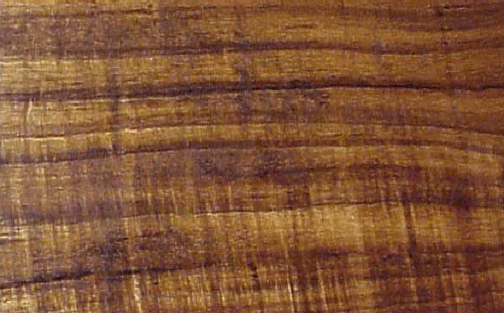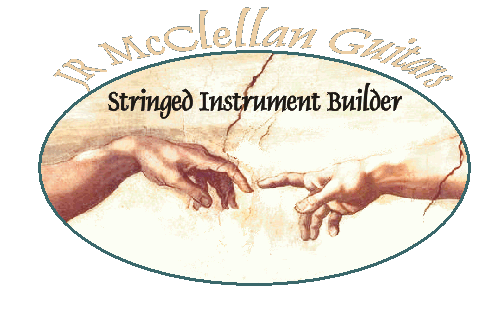I didn't come to lutherie by my own wits. I truly believe it was a
divine conspiracy, determined before I was born. I've always been a musician, since I
was young. At 9 or 10 years old, I had taught myself
to play basic guitar and accordion. My uncle used to visit on weekends and
would leave his guitar at our house, along with a Mel Bay book. In my spare
time, I would read it and figure out the notes
and chord fingerings and do the lessons. By the time my uncle would come the following
week, I could play things he hadn't yet figured out. That started
my love of instrumental music. Then, in 5th grade, I started playing
french horn. I learned how to really read music and was very
good. I also learned to play piano from doing my sister's lessons
when she wasn't playing. I love music and making music.
It was the late '60s and early '70 that really set my heart on the guitar
finally. More portable than a piano and more versatile than a french
horn or accordion. America, CSNY, Neil Young, Cat Stevens, James
Taylor - these were the guys and this was the music.
Alas, my guitar playing skills weren't up to the task of being a way to make a living, but I've kept on
plugging along for 40+ years playing. I had to face the fact that my
playing skills could never provide the means to make a living wage.
Thankfully, I have been blessed with the ability to do math and drawing (both
artistic and technical), to understand mechanics and the skill to do precise
work. These all led me to take an apprenticeship as a mold maker, and
ultimately to be trained as a mold design engineer. I learned to do
technical drawing with a drafting machine and pencil, and engineered many
complex molds and die cast dies (the term used for molds used to mold
molten metal - zinc, aluminum, etc.). I was especially involved with
automotive and consumer products, as well as closure molds. These are the
most complex types of molds, involving very complex shapes and mechanisms and,
in the case of unscrewing closure molds, the ability to unscrew the parts from
the mold as it opened.
I greatly enjoyed the trade for many years (20+), but as time passed, things changed. I learned CAD, being
involved with some of the first large CAD systems available (MacAuto - now
Unigraphics, Computervision, etc.). I was, and still am, very computer
literate and was given responsibility to setup computer networks for several
moldmakers, integrating design systems (CAD) with programming systems
(CAM). I even authored a piece of software to interface the engineering
networks to the CNC machines on the floor, allowing a PC to replace the tape
readers which used punched tape to store the machine code programs needed to cut
large complex surfaces into the steel blocks which ultimately form the
mold. The size of the files would be so huge that the punched tape would
not fit on the reels. As a result, we would use 55 gallon steel drums on
either side of the reader to hold the tape. Many times these programs
would cut unattended for 10 or 12 hours. Putting a PC in place of the tape
reader was a huge improvement. CNC machines became the norm for almost all
the cutting work, and eventually moved into every area of mold production.
I learned to surface model (in the days before solid modeling) and
solid model in CAD (using UG, SolidWorks, CadKey) and write CNC
programs (using MasterCAM, SmartCAM, CT Esprit, PowerMill). I rarely had opportunity to be involved with any hands-on building anymore.
What had been a craftsman's trade had now become a technology trade. I like
technology, but it eliminates the need for any personal craftsmanship skills.
I won't go into it here, but this
is the reason that much of the industrial strength which once
belonged to the US alone, is now being practiced by developing countries.
Technology can be bought which allows unskilled workers to do work which
was, not long ago, only able to be done by skilled craftsman. Now,
if a computer definition of something can be developed, such as a solid model, a
machine exists which can duplicate that definition accurately in any number
of materials (steel, wood, etc).
![header=[J. Rod McClellan] body=[This is me - playing guitar at a friend's house. Sorry about the 5 o'clock shadow]](images/Photos/people/rod1.jpg)
J. Rod McClellan
Luthier


![header=[Interesting Info] body=[These are my initials - JRMc]](images/initials.gif)
